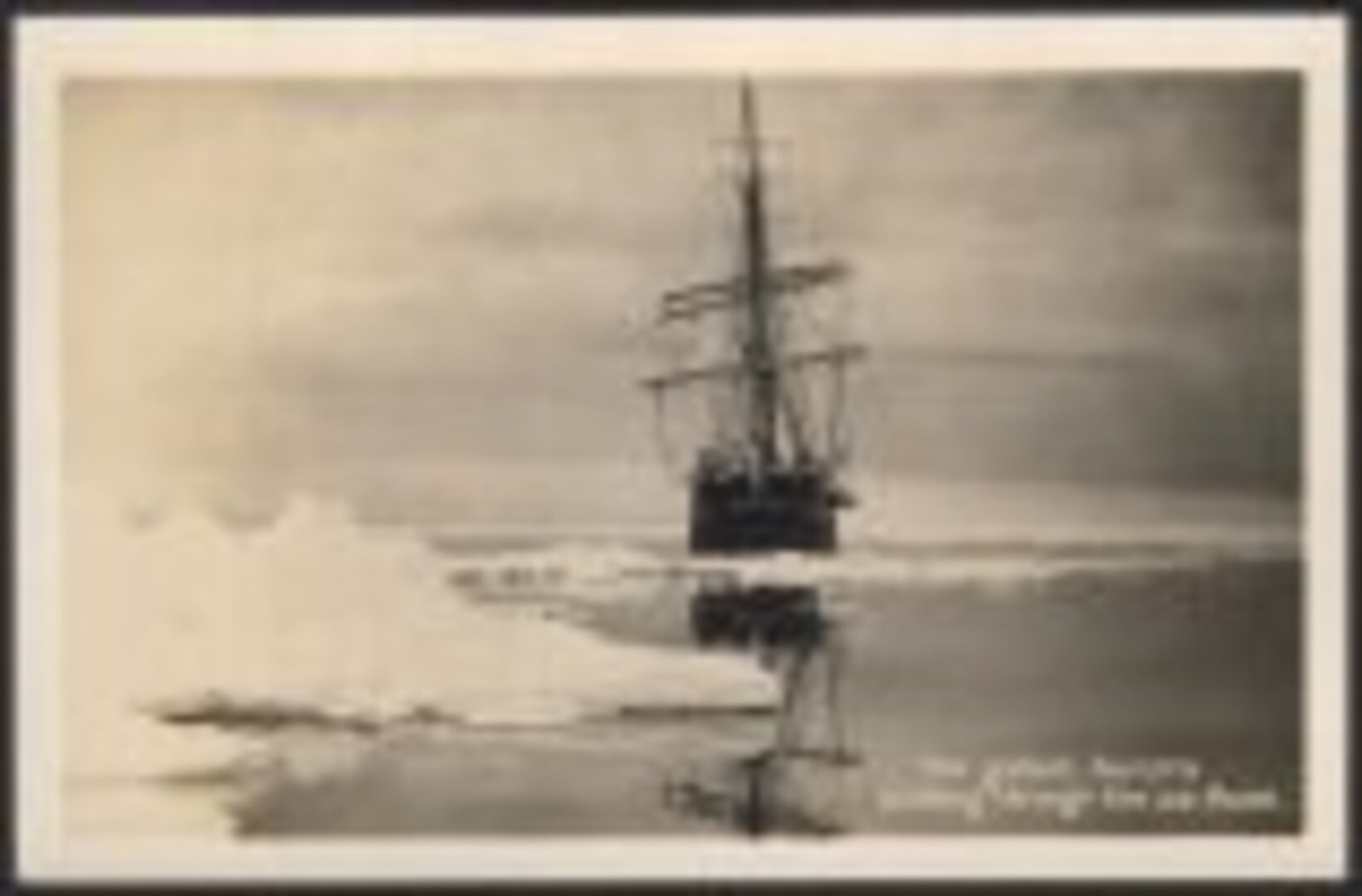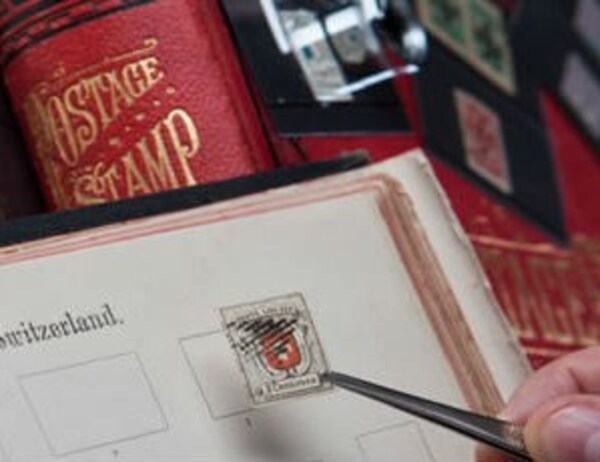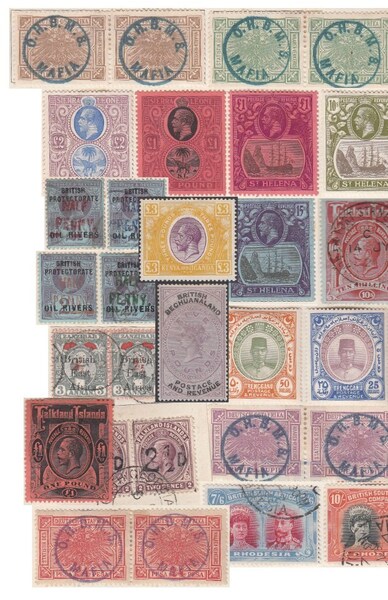Since modern man’s first forays into the Polar Regions the public were enchanted with stories of the selfless heroism and bravery shown by explorers of many nationalities. Often these brave men embodied national pride and it was not surprising that philately was used by early explorers to raise funds for their expeditions and that stamps from many countries enthusiastically recognised and provided colourful images that illustrate the endeavours of so many famous explorers. Probably the earliest philatelic items to evoke the public’s interest in the least known area on earth was the 1874 “Franz-Joseph Land” stamp purporting to be from an archipelago of islands in the far north of Russia. Various items appearing and later in the 19th Century stamp- like labels from Spitzbergen depicting Eskimos and polar bears were sold to tourists and affixed to covers.
In 1908 and 1911 stamps of New Zealand were overprinted “King Edwards VII Land” and “Victoria Land”, the premiums charged above the face values given to the Shackleton & Scott expeditions. The Scott Expedition was renowned for its use of philatelic material incl postcards and signed items from his ship “Terra Nova”.
Over time, different stamps and covers have recorded many expeditions and treks across these most inhospitable terrains, we are currently offering a 1957 Sir Edmund Hilary autographed cover as just one of a number of interesting items (we’re not just limited to philately, we also have two wonderful share certificates for the same 1956-58 Expedition lead by Hillary!)
From the latter part of the 19th Century, during the heyday of late Victorian Polar exploration and beyond, there has been an international interest and a demand for Polar Region philatelic material. Collectors want to possess part of a totally unique event. This is often provided by stamped covers tied with a cancellation from a scientific research station, a base camp or a very basic post office, set up to deal with the mail generated by staff working at these establishments and also simply cater for Collectors. Commemorative and pictorial stamps have also been issued depicting rich flora and fauna . The names of the great explorers of each generation are well known including, Scott, Shackleton, Amundsen and perhaps the most famous survivor of them all, Douglas Mawson. Those that followed included Rear Admiral Richard E. Byrd of the US Navy, who, in 1926 brought a new dimension to the spirit of adventure by flying a Fokker F-VII monoplane across the North Pole. This achievement was followed by his three Antarctic Expeditions that took place in 1928-30, 1933-34 and 1939-40 involving both air, sea and land exploration. In 1933 the US Postal Service issued the 3 Cent ‘Byrd Antarctic Exploration Stamp’, called ‘Little America Stamps’ in recognition of Byrd’s achievements and so called because covers were hand cancelled at the first US Post Office in Antarctica, quite literally a tent christened the ‘Little America Post Office’ that was erected near to where the two supply vessels berthed upon arrival in Antarctica. Some 56,000 prepaid and stamped covers had been carried on board the two vessels, SS ‘Jacob Ruppert’ and SS ‘Bear of Oakland’ from the Expedition’s HQ in Norfolk, confirming the level of interest shown at the time by international philatelists.
One rather audacious example of Polar exploration concerned the Australian adventurer, Sir Hubert-Wilkins who in 1931 focused his attention on an under ice polar crossing of the North Pole, using a decommissioned US Navy submarine called ‘Nautilus’. Whilst the ‘Wilkins-Ellsworth Trans-Arctic Expedition’ ended in failure, a number of illustrated covers were produced, some signed by Sir Hubert-Wilkins, with different cancellations that give details of the routes taken and the cities where they were sent from and received. At the time these were actively pursued by collectors wanting to receive a representative selection that to-day are similarly sought by a new generation of philatelists.
More recently in February 2013 a Post Office on Detaille Island, eleven miles south of the Arctic Circle, re-opened for business after being abandoned in 1959. A former British Research Station, one wooden hut, surrounded by icebergs and glaciers, complete with a resident thirty year old Post Mistress, has become the most southerly Post Office in the world! Occupied by scientists and support staff these research establishments continue to operate throughout the year, though the Post Office was only open during the short Antarctic summer. During a period of 4 weeks approximately 25 cruise ships called and carried mail the 900 miles to Port Stanley, in the Falkland Islands where the mail, complete with British Antarctic Territory stamps and an Antarctic post-mark, entered the mainstream postal service. Similar covers are franked with the cancellation of the Post Office concerned, often part of a pre-determined cycle that returns the cover to the original sender. This is an interesting area, worthy of research and the acquisition of philatelic covers linked to each unique expedition or event.
There is so much more, the Soviets for example lauded their Polar heroes in the way, many years later, they would idealise their Cosmonauts. Arctic bases, many on giant moving ice flows would send and receive mail by submarine and aircraft and were sought after by millions of Russian collectors.
It’s a great subject, stamps from a variety of polar territories and fascinating mail, depicting the beauty of these awesome places, and man’s attempt to survive there.


 General
General
 General
General
 General
General